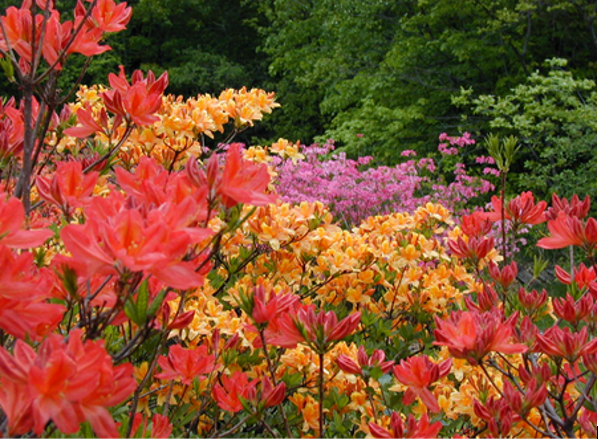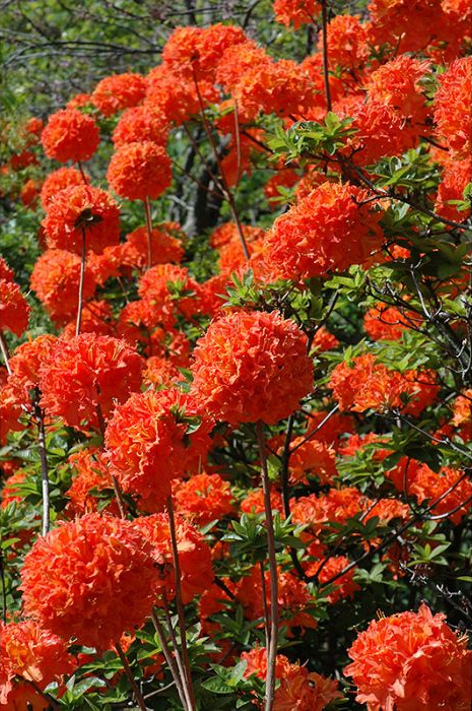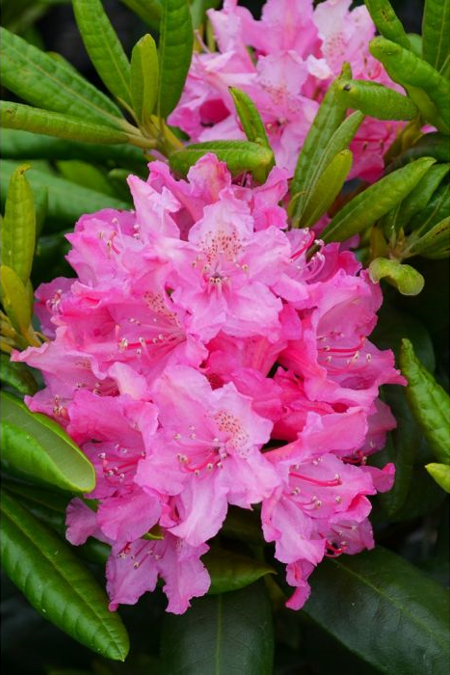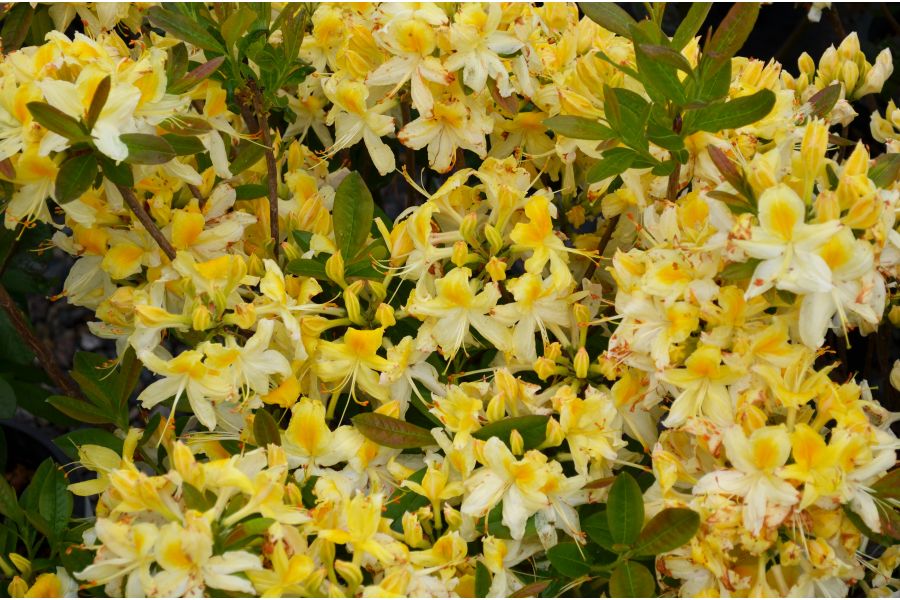Azaleas and Rhododendrons both prefer acidic soil with a pH of 4 to 5.5, they both bloom in early spring and offer quite a vibrant display. They are both in the same genus, Rhododendron, however azaleas are deciduous, losing their leaves in winter, while rhododendrons are evergreen, keeping their leaves through winter.

Azaleas and Rhododendron at the MN Landscape Arboretum
Azaleas
- Azaleas bloom in spring in a variety of colors.
- The University of Minnesota developed the Lights Series for our climate.
- They are dependable bloomers and have a good fall color.
- The Weston Hybrid azaleas bloom in June and July and have a great fall color.
- While a thicker plant, they still need winter protection.
- All of these azaleas come in yellow, pink, white, red, orange, and purple.

‘Mandarin Lights’ azalea
Planting
- Grow in full to part sun.
- Consider the other plants in the area as these plants enjoy an acidic soil.
- Dig the hole twice as wide as the root ball.
- Mix the soil you’ll use to backfill with about 1/3 peat moss to add acid.
- Place your plant so the top of the root ball flush is with the ground.
- Backfill and tamp the soil down.
- Apply a plant starter on top of the soil around the edge of the planting where the roots will grow out.
- Water well.
- Add 2 to 4 inches of organic mulch. Do not use rock.
They do not have the winter sun issues that the rhododendrons do.
Rhododendrons
- Rhododendrons come in small-leafed varieties and large leafed varieties.
- Small-leafed varieties have a greater tolerance to the winter sun and are more winter hardy.
- Small-leafed rhodo flowers come in pastels of pinks and purples.
- Large or Broad-leafed varieties come in white, red, and pink.
- They keep their leaves all winter which turn a deep purple in the fall.

‘Haaga’ rhododendron
Planting (instructions as above with these differences)
- Rhododendrons are sensitive to extreme heat. Do not plant on the south side up against a building.
- They are sensitive to winter sun as well as winter winds.
- Place them on an east side.
- They prefer well-drained soil and need consistent water as their roots are so close to the surface and can dry out faster.
The following information applies to both azaleas and rhododendrons
Fertilizer
- Apply an acidic fertilizer such as Green Loon in spring or early summer.
Insects and Disease
- Prone to root rot fungus if the soil is not well drained.
- Powdery mildew can be an issue if the summer is hot and humid, any general fungicide can be used. Bonide Sulfur plant fungicide also has an acidifier.
- If leaves are turning chlorotic, the soil may be too alkaline and further acidification is needed. Chlorosis is a yellowing of leaf tissue due to a lack of chlorophyll. Possible causes of chlorosis include poor drainage, damaged roots, compacted roots, high alkalinity, and nutrient deficiencies in the plant.
- Insects are rarely a problem.
- Rabbits and other rodents tend to feed on these plants. It is best to protect them with a deterrent.
Pruning
- Prune in spring immediately after they are done flowering.
- Do not prune any more than 1/3 of the plant’s height..
The experts at Gertens are always available to answer your questions!

